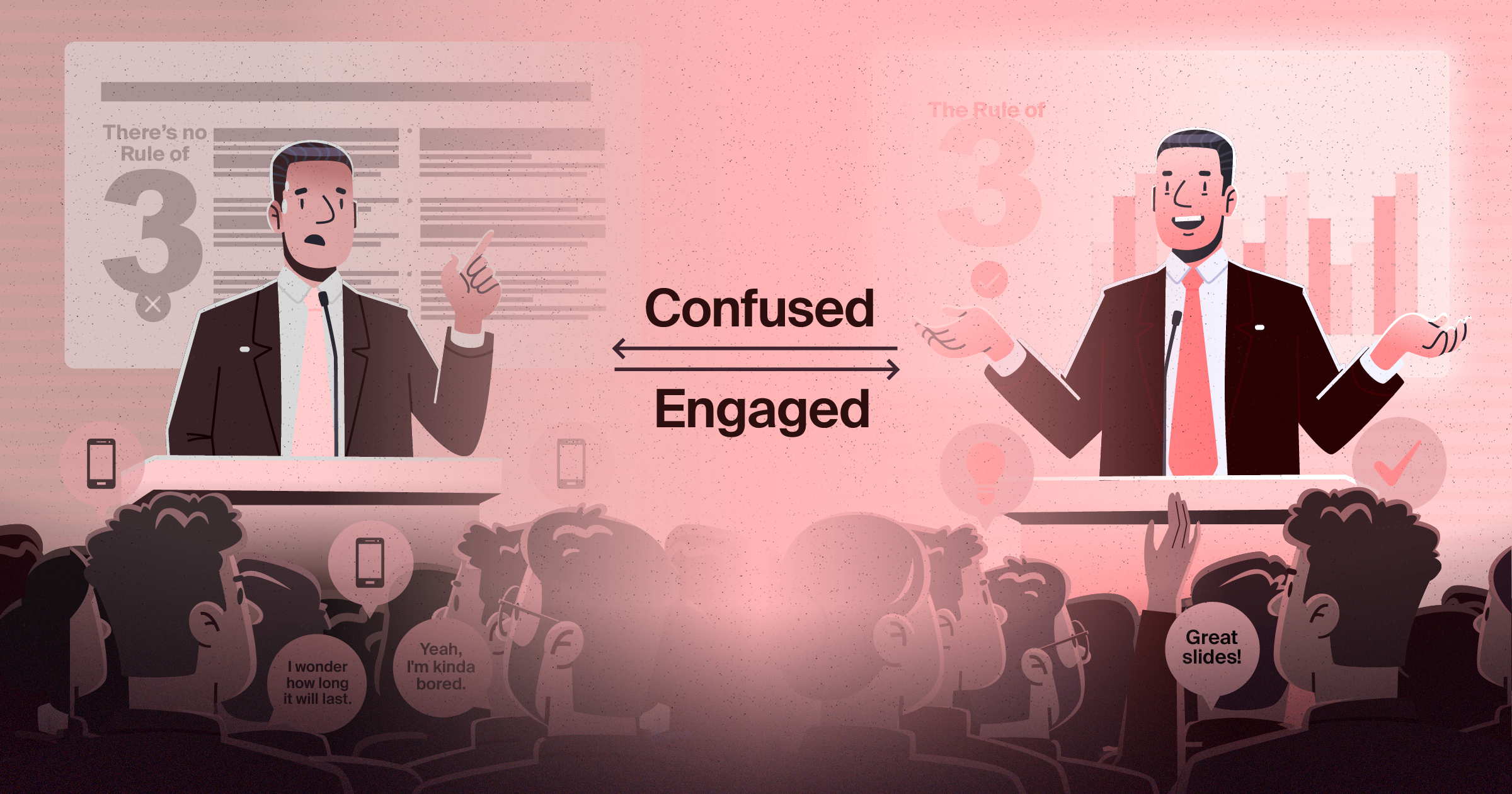How To Turn Your Slides Into A Captivating Story
Find out how you can successfully transform your slides into compelling narratives that actually drive result.

The 3 AM PowerPoint problem
You're three slides deep into your presentation when you see it happen. Eyes glaze over. Phones come out. That one executive starts checking email. Your brilliant strategy is getting buried under an avalanche of bullet points and charts that look like they escaped from 2003. Sound familiar? You're not alone in this presentation nightmare.
What you'll learn
This article breaks down why your slides are sabotaging your message and how to transform them into compelling narratives that actually get results. We'll show you the exact framework top executives use to turn data dumps into decision-driving stories.
What you'll discover:
1. Why Your Slides Are Killing Your Message (And Your Reputation)
2. The Hidden Psychology of Boardroom Storytelling
3. The Complete Story-Driven Presentation Framework
4. How to Transform Any Deck Into a Narrative That Drives Action
1. Why your slides are killing your message
You walk in with game-changing insights, but your slides look like someone copy-pasted an annual report and hoped for the best. No story. No context. Just information overload.
Smart people start questioning smart ideas when they're presented poorly. Your carefully researched recommendations get overshadowed by misaligned text boxes and inconsistent fonts. The audience judges your strategy based on whether your bullet points line up properly.
The real damage:
✔️ Your credibility takes a hit before you speak
✔️ Complex ideas get lost in cluttered layouts
✔️ Decision-makers tune out by slide three
✔️ Your presentation becomes forgettable background noise.
2. The hidden psychology of boardroom storytelling
Here's what most executives don't realize: your audience's brain is wired for stories, not spreadsheets. When you present data without context, you're fighting against thousands of years of human psychology.
The business impact is real:
• Decision-makers remember stories 22 times more than facts alone
• Presentations with clear narratives get 30% more engagement
• Story-driven pitches receive 40% more funding approval
• Executives who use storytelling frameworks close deals 20% faster
The presentation paradox strikes again:
You're brilliant at strategy but terrible at narrative structure. You can restructure entire departments, but can't figure out why your audience checks out halfway through your deck
3. The complete story-driven presentation framework
Stop treating your deck like a database. Your slides have one job: telling a story that drives action. Here's the exact framework that transforms boring presentations into compelling narratives.
The Three-Act Structure that actually works
Act 1: The setup
🎯 What's the real problem? Get specific and personal
💼 Why should they care? Connect to business outcomes
💲 What's at stake? Show the opportunity cost of inaction
Act 2: The journey
📊 Use data as supporting evidence, not the main character
🗂 Group related slides for sequential clarity
👣 Show the path from problem to solution
Act 3: The resolution
💻 Present your solution as the hero's tool
⏭️ End with clear next steps
☑️ Leave them with one memorable takeaway
Proven narrative frameworks you can use today
The Problem-Solution-Result Framework
➊ Start with specific pain points (not generic industry challenges)
➋ Present your solution as the logical answer
➌ Show real-world results and outcomes
The Hero's Journey for business
👥 Your customer = the hero
🕵🏼 The problem = the villain they must defeat
💡 Your solution = the weapon that saves the day
The Before-and-After Transformation
🖌️ Paint the current state (with specific details)
🎥 Show the desired future state
🎢 Position your solution as the bridge between them
Design for story, not just information
Visual hierarchy that supports your narrative:
✅ Use contrast to guide attention through your story
✅ Headlines should advance the plot, not just label content
✅ Images should reinforce your message, not distract from it
The one-slide, one-idea rule: Every slide should advance your story. If it doesn't move the narrative forward, cut it. Your audience should be able to follow your logic without you in the room.
Making financial reports tell stories
Think financial reports can't be narratives? Think again. Instead of presenting Q3's 12% revenue loss as a chart, try this:
"Q3 hit us hard with a 12% revenue drop. But here's what we did next. We doubled down on our high-margin segment, cut customer churn by 50%, and ended the quarter with pipeline growth of 400%."
Now you have a compelling narrative arc that turns dry numbers into a gripping turn-around tale.
The theme that ties everything together
Consistency is your secret weapon. If your theme is "transformation," every slide should reinforce that concept. Your data should show change, your visuals should suggest movement, and your language should emphasize progress.
Theme examples that work:
📈 Recovery: show turnaround metrics and comeback stories
🚀 Growth: emphasize momentum and expansion opportunities
💡 Innovation: highlight breakthroughs and competitive advantages
📌 Efficiency: focus on optimization and resource management
4. Transform any deck into a narrative that drives action
Ready to stop fighting PowerPoint at 3 AM? Here's your step-by-step process for turning any presentation into a story that gets results.
Your transformation checklist:
✅ Define your one key message: What should they remember if they forget everything else?
✅ Structure your narrative arc: Beginning, middle, end with clear progression
✅ Choose your theme and stick to it: Every element should reinforce your central story
✅ Design for clarity, not complexity: Your story should be easy to follow
✅ End with a powerful call to action: Tell them exactly what to do next
The bottom line: your ideas deserve better than bullet-point prison. You handle the strategy. Let someone else handle the storytelling structure that makes your brilliance impossible to ignore.
Ready to transform your presentations into stories that drive decisions?
Your late-night PowerPoint sessions end here. Article 36 specializes in turning executive insights into compelling narratives that get results. While you focus on strategy, we handle the presentation design that makes your ideas impossible to ignore.












.webp)







.webp)